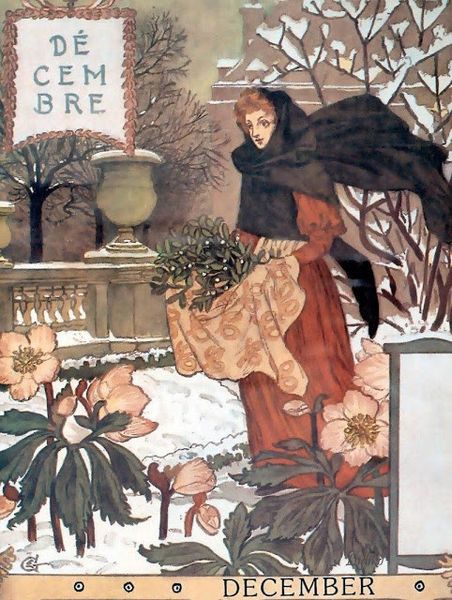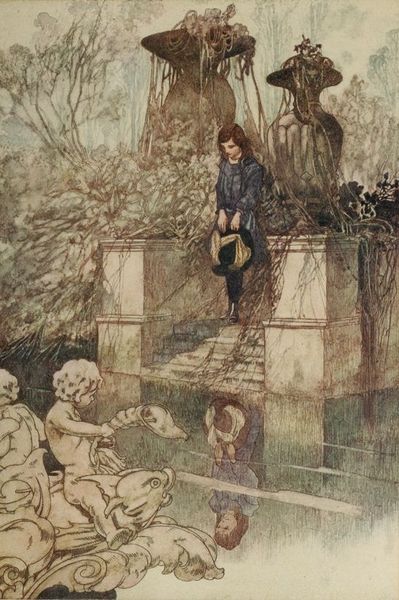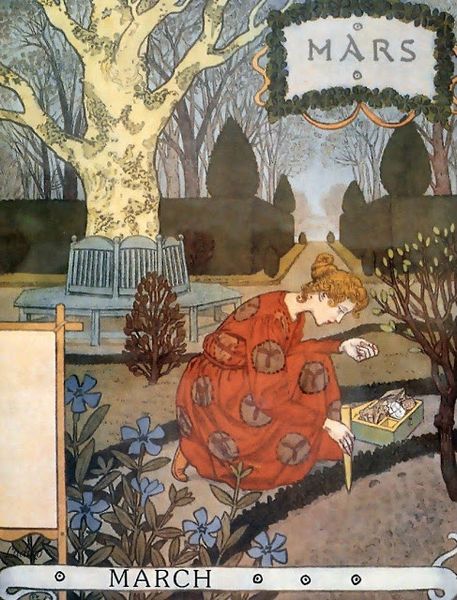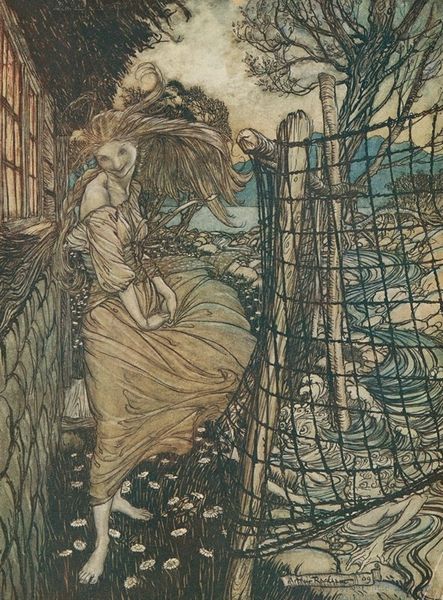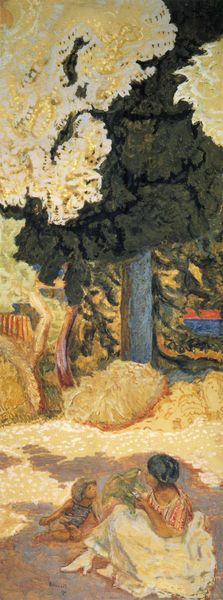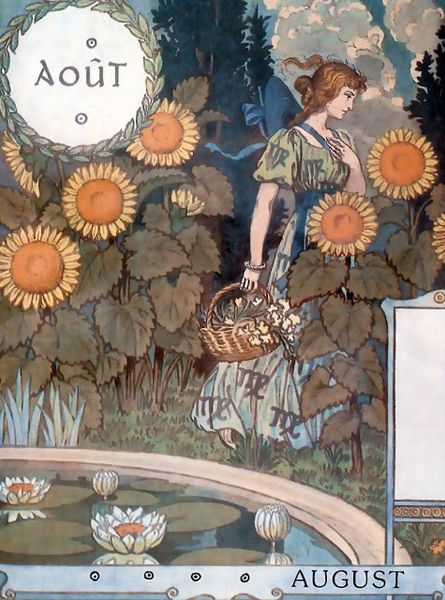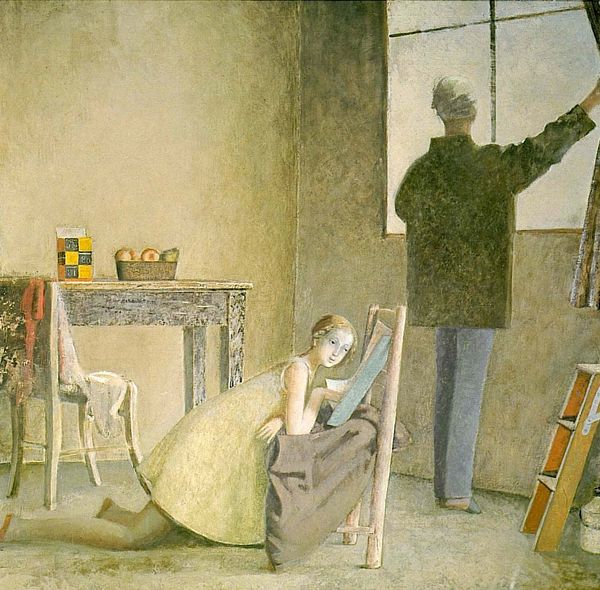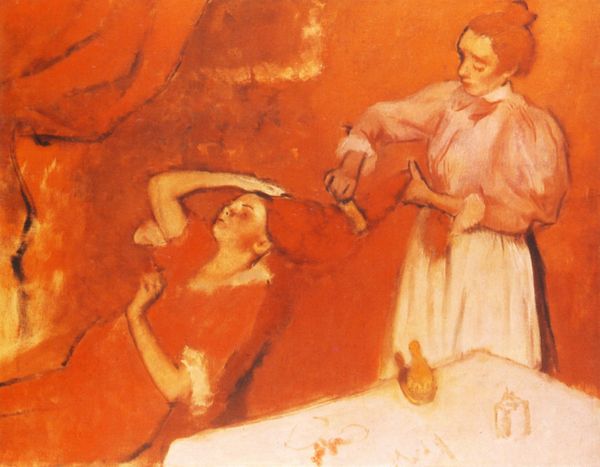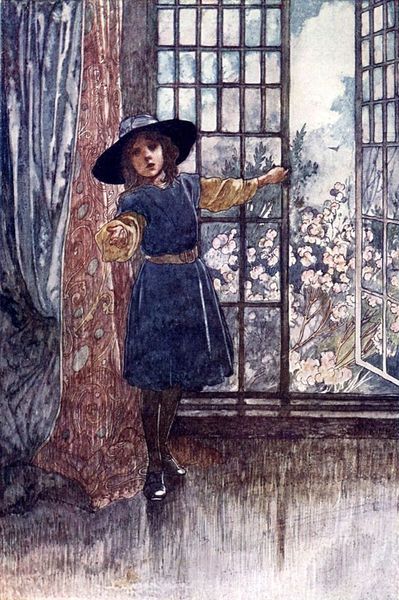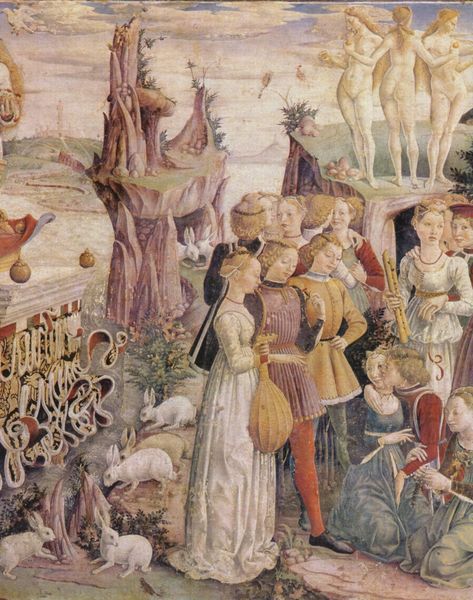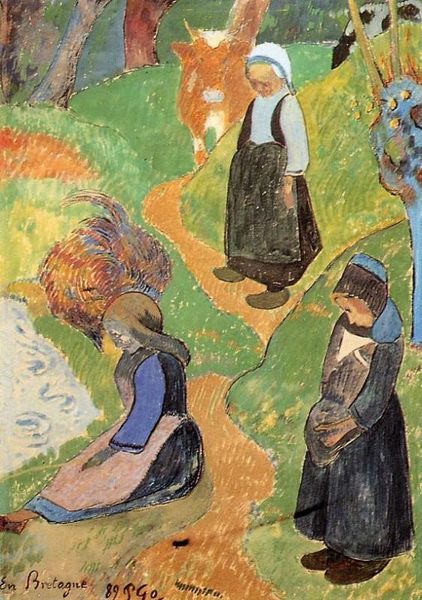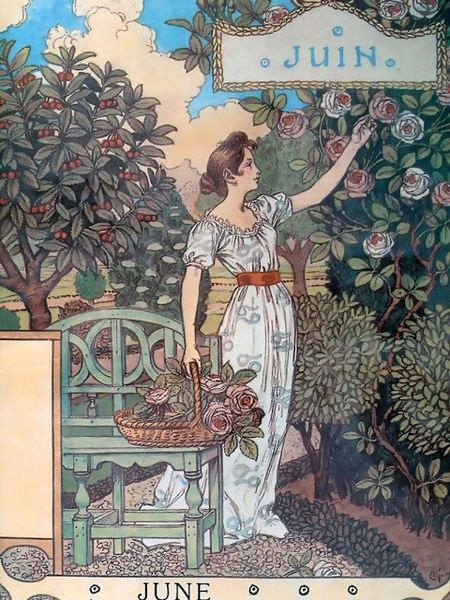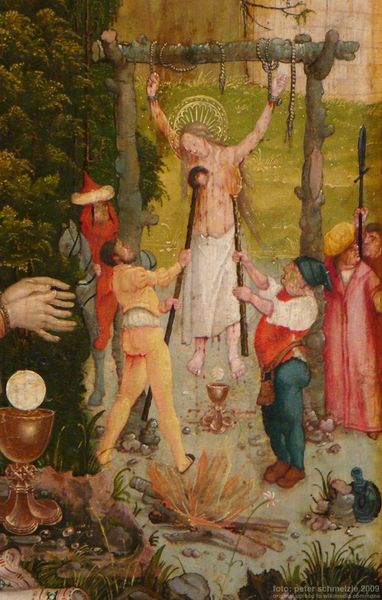
painting, watercolor
#
art-nouveau
#
water colours
#
painting
#
landscape
#
figuration
#
watercolor
#
watercolour illustration
#
mixed medium
#
mixed media
#
watercolor
Copyright: Public domain
Editor: This is "La Belle Jardiniere – February" by Eugène Grasset, made in 1896. It’s a watercolor and mixed media piece. I’m immediately struck by the contrast between the delicate snowdrops and the rather somber-looking woman tending to the winter garden. How do you interpret this juxtaposition? Curator: It’s a fascinating tension, isn't it? Grasset, working within the Art Nouveau movement, often explored the feminine ideal. Consider the title: "La Belle Jardiniere," the beautiful gardener. This woman, rendered with careful detail, is participating in the act of cultivation, a traditionally feminine role connected to nature and growth. Editor: Right, she’s literally pruning for future growth. But her attire and expression seem almost at odds with that. She looks very serious. Curator: Exactly. The Art Nouveau period, despite its celebration of beauty, was also a time of great social change and evolving roles for women. This image, seemingly a celebration of pastoral life, might also hint at the burdens and expectations placed upon women of that era. The snowdrops, while beautiful, are fragile and represent the fleeting nature of beauty, especially during winter's starkness. Consider also the frame surrounding the image, it encloses her into this "feminine" space. What power relations do you observe? Editor: So you're saying it’s not just a pretty picture, but a comment on the position of women in society at the time? The garden could be a metaphor. Curator: Precisely! Art Nouveau artists were often invested in expressing their views on politics, and Grasset could be critiquing the limitations imposed on women, even within seemingly idyllic settings. The image asks: is she cultivating only a garden, or also something more? Is it truly "hers?" Editor: I hadn't thought about it that way at all. I just saw a pretty illustration. This is much more complex. Curator: Indeed, by engaging with feminist theory and social history, we can read a painting beyond the superficial and acknowledge the multifaceted dialogues the art may participate in. The more we question what's missing from the image, or made apparent, the more insight we uncover about historical truths.
Comments
No comments
Be the first to comment and join the conversation on the ultimate creative platform.
